Sansevieria Francisii, or Snake Plants, are a type of succulent that is native to Africa. They are low-maintenance plants that can tolerate a wide range of conditions, making them ideal for beginner plant-parents. This care guide will cover all the basics of caring for a Snake Plant, from watering to propagating.
Why keep a Sansevieria Francisii?
They are tolerant of low light and neglect, and will even thrive in areas that other plants would struggle in. Snake plants are also known to be very effective at purifying the air, making them a great choice for those looking to improve their indoor air quality. Sansevieria Francisii, or snake plants, are easy to care for and make great houseplants.
First Steps After Purchase
The Sansevieria Francisii is a succulent plant that can grow up to two feet tall and has long, slender leaves that are green with white stripes. Sansevieria Francisii is a beautiful and unique plant that is native to Africa. The plant is very easy to care for and is an excellent choice for beginners. It is a member of the Asparagaceae family and is closely related to the Agave plant.
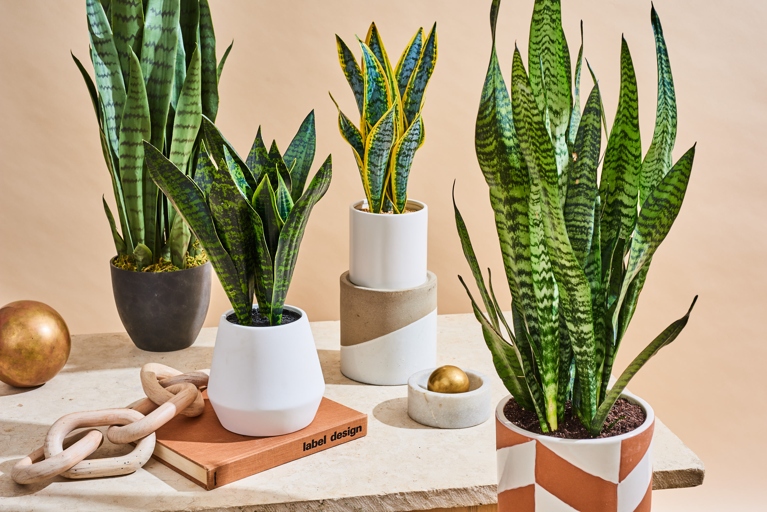
The first step after purchasing your Sansevieria Francisii is to find the perfect location for it. The plant does best in bright, indirect sunlight but can also tolerate low light conditions. It is important to choose a location that has good drainage as the plant does not like to sit in wet soil. Once you have found the perfect spot, you can begin to pot your plant.
When potting your Sansevieria Francisii, it is important to use a well-draining potting mix. You can either purchase a succulent potting mix or make your own by mixing one part perlite with one part potting soil. Once you have your potting mix ready, simply fill your pot and gently tap it down to remove any air pockets.
Now that your plant is all potted up, you can give it a good watering. Be sure to use room temperature water and only water your plant when the soil is dry to the touch. Overwatering is one of the most common problems with succulents, so be sure to err on the side of caution.
With a little bit of love and attention, your Sansevieria Francisii will thrive and bring you years of enjoyment. Once your plant is watered, you can sit back and enjoy your new Sansevieria Francisii. These plants are very low maintenance and are perfect for those who are new to plant care.
How to Care for Sansevieria Francisii
They are known for their easy care and durability, and can even thrive in neglect. However, there are a few things you can do to help your snake plant thrive. Sansevieria Francisii, or snake plants, are some of the most popular houseplants around.
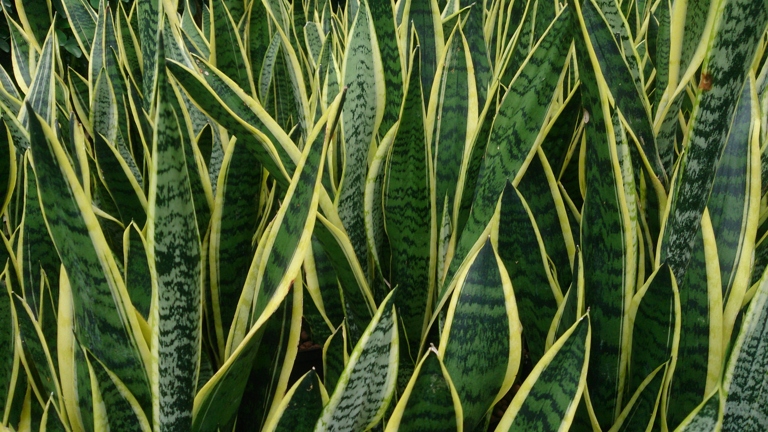
Be sure to use a pot with drainage holes to avoid root rot. They can tolerate low light, but will grow slower and may start to lose their variegation. Snake plants also prefer well-draining soil. Snake plants prefer bright, indirect light.
Snake plants are tolerant of drought, so it’s better to err on the side of too little water than too much. Water your snake plant when the soil is dry to the touch. Allow the soil to dry out completely between watering.
Fertilize your snake plant once or twice a year with a balanced fertilizer. Be sure to follow the directions on the fertilizer package, as too much fertilizer can burn the roots.
Sansevieria Francisii are tough plants that can tolerate a lot of neglect. With a little bit of care, they will thrive and add a touch of green to your home.
How to Water Sansevieria Francisii
They are very tolerant of neglect and can go long periods of time without water. Sansevieria Francisii, or snake plants, are some of the easiest houseplants to care for. When watering, allow the soil to dry out completely before watering again. Snake plants are also very tolerant of low light conditions, making them ideal for rooms with little natural light.
Sansevieria Francisii Light Requirements
Sansevieria Francisii, or Snake Plant, is a beautiful, easy-to-care-for houseplant. It is known for its ability to thrive in low-light conditions and is an excellent choice for beginners or those who don’t have a lot of experience with plants.
Snake Plants are native to Africa and prefer bright, indirect light. If you are growing your Snake Plant indoors, make sure to place it in a spot where it will get plenty of light. However, they will also do well in low-light conditions.

Snake Plants are very tolerant of different types of light, but they will grow best in bright, indirect light. If you are growing your Snake Plant indoors, make sure to place it in a spot where it will get plenty of light.
They are very tolerant of different types of light and can thrive in both low and bright light conditions. Sansevieria Francisii are very easy to care for plants and make an excellent choice for beginners or those who don’t have a lot of experience with plants.
Temperature
They prefer warm climates and can tolerate temperatures as high as 100 degrees Fahrenheit. They also need bright light, but can tolerate some shade. However, they will not do well in cooler climates and should be kept above 50 degrees Fahrenheit. Temperature is one of the most important factors in growing Sansevieria Francisii.
Humidity
If you live in a hot and humid climate, you may be familiar with the challenges that come with trying to keep your plants healthy. High humidity can cause all sorts of problems, from leaf drop to fungal diseases.
This tough little plant is native to Africa, where it grows in hot, dry conditions. One of these is the Sansevieria Francisii, or snake plant. But there are some plants that actually thrive in high humidity environments.

So if you’re looking for a plant that can handle high humidity, the Sansevieria Francisii is a great option. Just be sure to give it plenty of bright light and well-drained soil, and it will thrive.
Misting/ Spraying
They’re easy to care for, tolerate a wide range of conditions, and look great in any space. One of the key elements to keeping your snake plant healthy is regular misting or spraying. Sansevieria Francisii, or snake plants, are some of the most popular houseplants around.

Snake plants are native to arid regions and so they’re used to living in dry conditions. However, they will appreciate a little extra moisture, especially during the warmer months. Misting or spraying your snake plant once a week will help to keep it looking its best.
Pay attention to the plant and see how it responds. If the leaves start to look wilted or dry, give it a little extra water. If you live in a particularly dry climate, or if your home is particularly dry, you may need to mist or spray your snake plant more often.
Snake plants are tough plants and can tolerate a wide range of conditions, but regular misting or spraying will help to keep them looking their best.
Sansevieria Francisii Soil
Sansevieria Francisii Soil
The plant is also known as the snake plant, mother-in-law’s tongue, or viper’s bowstring hemp. Sansevieria Francisii is a succulent plant that is native to Africa. The plant has long, stiff, sword-like leaves that are green with white stripes running along the length of the leaf. The leaves are arranged in a rosette pattern and can grow up to 3 feet tall. It is a member of the Asparagaceae family and is closely related to the agave plant. The plant produces small, white flowers that bloom in the summer.

The plant is drought tolerant and can survive in low-water conditions. Sansevieria Francisii is a hardy plant that can tolerate a wide range of growing conditions. Sansevieria Francisii is an easy plant to care for and is a good choice for beginners. The plant prefers well-drained soil and full sun to partial shade.
Fertilizing Sansevieria Francisii
They are known for their easy care and ability to thrive in a wide range of conditions. Sansevieria Francisii, or snake plants, are one of the most popular houseplants.
To keep your snake plant healthy and growing, it is important to fertilize it on a regular basis. The best time to fertilize is during the growing season, which is typically from spring to fall.
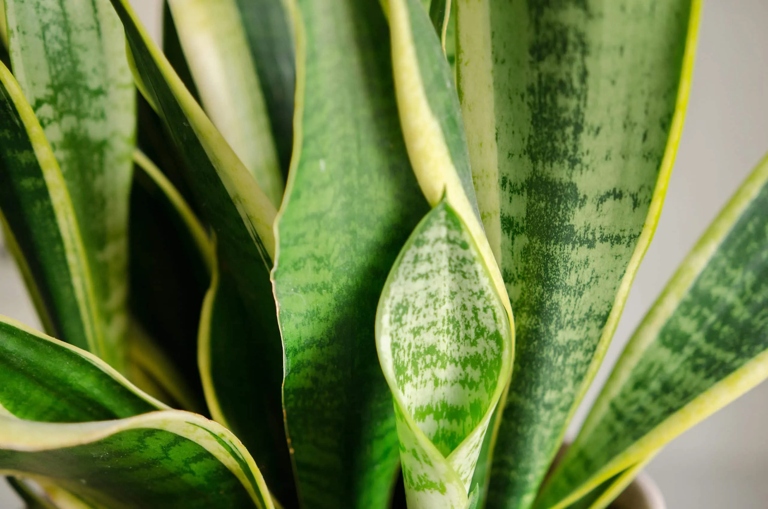
However, it is important to choose one that is specifically formulated for use on succulents. There are a variety of fertilizers that can be used on snake plants. This will help to ensure that your plant gets the nutrients it needs without being damaged by the fertilizer.
Over-fertilizing can be harmful to your snake plant. When applying fertilizer, be sure to follow the directions on the package.
If you are unsure of how often to fertilize your snake plant, ask your local nursery or gardening center for advice.
Propagating Sansevieria Francisii
It is a great plant for beginners or those who do not have a lot of time for plant care. Sansevieria Francisii can be propagated by division or by rooting leaf cuttings. It is a succulent plant that is very easy to care for and is very tolerant of neglect. Sansevieria Francisii is a beautiful type of snake plant that is native to Africa.
Be sure to use a well-draining potting mix and water the offsets sparingly until they are established. To propagate by division, simply remove a offsets from the mother plant and pot them up in their own pot.

To propagate by leaf cuttings, cut a leaf from the mother plant at the base of the leaf. Allow the cut leaf to callous over for a few days and then pot it up in a well-draining potting mix. Water the leaf cutting sparingly until it is established.
Propagating in Water
This can take anywhere from a few days to a few weeks. All you need is a healthy leaf cutting and a jar of water. Sansevieria Francisii, or Snake Plants, are easy to propagate in water. Once the roots are a few inches long, you can transplant the cutting into a pot of soil. Simply place the cutting in the water, making sure that the leaves are not touching the water, and wait for roots to form.

They are drought-tolerant and can even thrive in low-light conditions. Snake Plants are not only easy to propagate, but they are also very low-maintenance. So, if you’re looking for a plant that is easy to care for and doesn’t require a lot of attention, Snake Plants are a great option.
Propagating in Soil
It is a member of the Asparagaceae family and is closely related to the snake plant (Sansevieria trifasciata). The plant is named after its discoverer, Francis Xavier Sanseverino. Sansevieria Francisii is a succulent plant that is native to Africa.
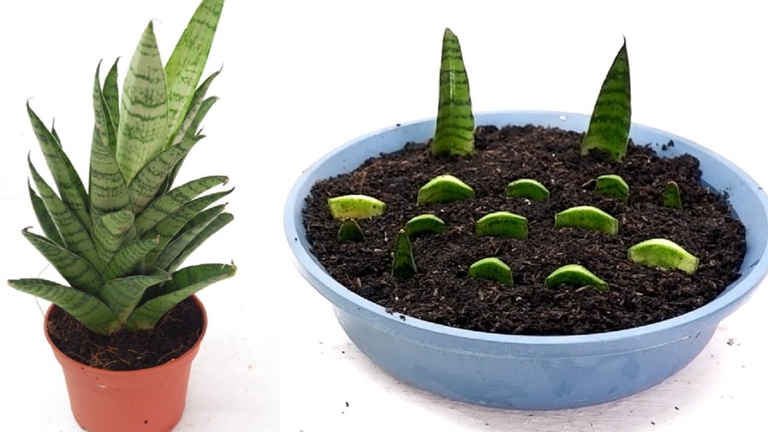
Sansevieria Francisii is a hardy plant that can tolerate a wide range of growing conditions. The flowers are small and white, growing in clusters on the ends of the leaves. The leaves are thick and fleshy, up to 18 inches long and 3 inches wide. It is a slow-growing plant, but can reach up to 2 feet in height. They are dark green in color with light green stripes running vertically down the length of the leaf.
Then, plant the cutting in well-draining soil and water it sparingly. Simply take a cutting from the plant and allow it to callous over for a few days. Sansevieria Francisii is a easy plant to propagate from cuttings. The cutting will soon take root and begin to grow.
How to Repot Sansevieria Francisii
If you have a Snake Plant that is getting too big for its pot, or if you want to refresh the potting mix, you will need to repot it. They are easy to care for and can tolerate a wide range of growing conditions. Sansevieria Francisii, or Snake Plants, are a popular type of houseplant.
Here are some tips for repotting a Snake Plant:
– Choose a pot that is only slightly larger than the current pot. Snake Plants do not like to be pot-bound, but they also do not need a lot of root space.

You can use a commercial potting mix made for succulents and cacti, or you can make your own mix by combining equal parts sand, perlite, and peat moss. – Use a well-draining potting mix. Snake Plants are native to Africa, where they grow in sandy, well-drained soils.
– Water the plant well before repotting. This will help to prevent the roots from drying out during the repotting process.
Be careful not to damage the roots. – Gently remove the plant from its current pot.
– Place the plant in the new pot and fill in around it with the potting mix. Tamp down the mix gently to remove any air pockets.
– Water the plant well and place it in a bright, indirect light.
Pruning and Trimming
Pruning and trimming are an important part of keeping your Sansevieria Francisii healthy and happy. While it’s not necessary to do this every week, it’s a good idea to do it every month or so.
To prune your Sansevieria Francisii, simply cut off any dead or dying leaves. You can also trim back any leaves that are getting too long.
When trimming, be sure to use sharp, clean scissors. This will help prevent infection and disease.

Pruning and trimming are important tasks that help keep your Sansevieria Francisii healthy and looking its best. By doing this regularly, you’ll be able to enjoy your plant for many years to come.
How to Solve Common Sansevieria Francisii Problems
However, even the most low-maintenance plants can have problems from time to time. Sansevieria Francisii, or Snake Plants, are a common houseplant that is known for being easy to care for. Here are some of the most common Sansevieria Francisii problems and how to solve them:
Allow the soil to dry out completely before watering again. If your Snake Plant is looking limp and lifeless, it is probably due to too much water. Snake Plants are very tolerant of drought, so it is best to err on the side of too little water rather than too much.
Snake Plants prefer bright, indirect light, so if you are keeping yours in a sunny spot, try moving it to a more shady location. If your Snake Plant has yellow leaves, it is a sign of too much sun.
If your Snake Plant has brown leaves, it is a sign of too little sun. Again, Snake Plants prefer bright, indirect light, so if you are keeping yours in a low-light spot, try moving it to a brighter location.
If you see brown or yellow spots on the leaves of your Snake Plant, it is likely due to a fungal disease. The best way to treat this is to remove any affected leaves and to make sure the plant is getting enough air circulation.

If you are keeping yours in a low-light spot, try moving it to a brighter location. If your Snake Plant is not growing, it is probably due to too much shade. Snake Plants need bright, indirect light in order to grow.
Pests
It’s tolerant of low light levels, infrequent watering, and poor soil conditions. Also known as the snake plant or mother-in-law’s tongue, this tough plant is practically indestructible. If you’re looking for a plant that can tolerate just about any type of neglect, the Sansevieria Francisii is a great option.

fertilize the plant every two to three months with a balanced, all-purpose fertilizer. Water the plant when the soil is dry to a depth of about 2 inches. Despite its ability to withstand neglect, the Sansevieria Francisii still benefits from regular care. Allow the water to drain completely before adding more.
Pests are not usually a problem for this plant, but mealybugs and spider mites can occasionally be a problem. These pests can be controlled with regular applications of insecticidal soap or neem oil.
Diseases
Snake Plants are known to be resistant to many diseases, but there are a few that can affect them. It is a hardy plant that can tolerate neglect and poor growing conditions. Sansevieria Francisii, or Snake Plant, is a succulent native to Africa.
If they are black or mushy, the plant has root rot and should be discarded. If you think your Snake Plant has root rot, remove it from the pot and inspect the roots. Root rot is caused by too much water and can lead to the plant dying. One disease that can affect Snake Plants is root rot.
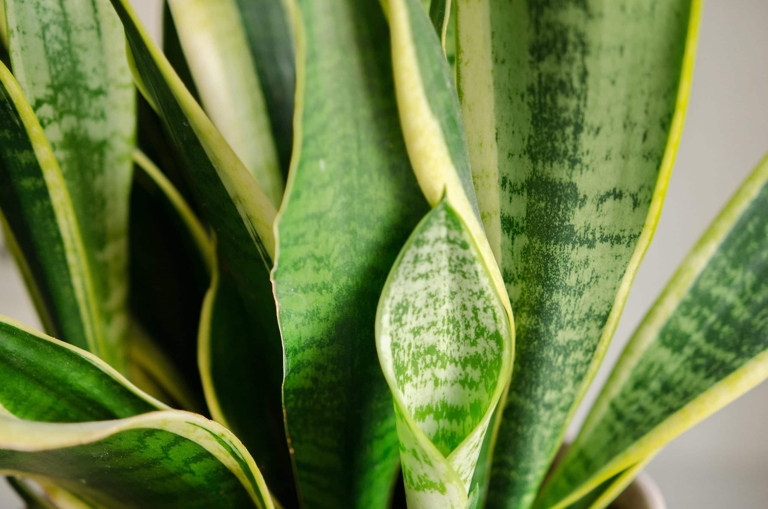
Another disease that can affect Snake Plants is mealybugs. They can cause the plant to become stunted and produce fewer leaves. Mealybugs are small, white insects that feed on the plant’s sap. If you see mealybugs on your Snake Plant, you can remove them with a cotton swab dipped in rubbing alcohol.
Scale insects are small, brown insects that feed on the plant’s sap. They can cause the plant to become stunted and produce fewer leaves. If you see scale insects on your Snake Plant, you can remove them with a cotton swab dipped in rubbing alcohol. Finally, Snake Plants can be affected by scale insects.
Black Spots on Leaves
If you notice black spots on the leaves of your Sansevieria Francisii, don’t panic! This is a relatively common issue that can be easily fixed with a little bit of effort.

Black spot is most commonly seen in humid or wet conditions, so if your plant is kept in an area with high humidity, it’s more susceptible to this disease. This disease is caused by a fungus that infects the leaves, causing the black spots to form. The most likely cause of black spots on Sansevieria Francisii leaves is a fungal disease called black spot.
Finally, apply a fungicide to the leaves to kill the fungus and prevent it from coming back. Next, water the plant only when the soil is dry to the touch to prevent the fungus from spreading. To treat black spot, start by removing any affected leaves from the plant. Then, increase the air circulation around the plant by moving it to a brighter location or opening a window near it.
With a little bit of care, you can easily get rid of black spots on your Sansevieria Francisii leaves and enjoy a healthy, beautiful plant!
Sansevieria Francisii leaves Falling off
If you think it is getting too much light, try moving it to a shadier spot. With a little trial and error, you should be able to find the perfect spot for your Sansevieria Francisii! The best way to prevent your plant from losing leaves is to keep it in a consistent environment – not too hot, not too cold, and out of direct sunlight. This is normal behavior for the plant, especially if it is exposed to drafts or sudden changes in temperature. If you notice that your Sansevieria Francisii’s leaves are falling off, don’t panic! If you think your plant is not getting enough light, try moving it to a brighter spot.
Brown spots on Sansevieria Francisii leaves
One thing you may notice on your snake plant leaves are brown spots. Sansevieria Francisii, or snake plants, are a type of succulent known for their hardiness and easy care. These spots are usually caused by one of two things: either too much sun or not enough water.
Move it to a spot that gets less direct sunlight and the spots should start to fade. If the brown spots are on the leaves that are closest to the sun, then it’s likely that the plant is getting too much sun.

Water your snake plant more frequently and the spots should start to fade. If the brown spots are on the leaves that are further from the sun, then it’s likely that the plant isn’t getting enough water.
Sansevieria Francisii Leaves Curling
However, if you notice the leaves of your Sansevieria Francisii plant beginning to curl, it is an indication that something is wrong. Sansevieria Francisii is a beautiful plant that is known for its ability to thrive in low-light conditions.
One possibility is that the plant is not getting enough water. If the leaves of your plant are wilting or beginning to turn brown, it is a sign that the plant needs more water. If the leaves of your plant are beginning to yellow, it is a sign that the plant needs more light. Another possibility is that the plant is not getting enough light. There are a few possible reasons why the leaves of your Sansevieria Francisii plant may be curling.
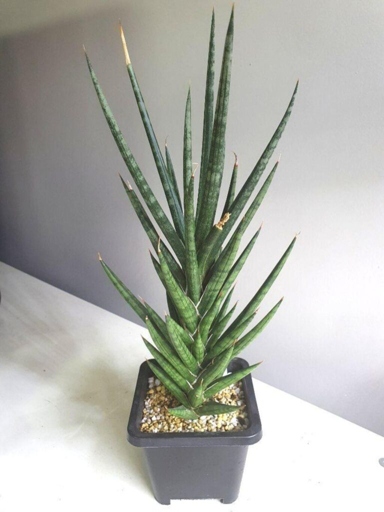
If you notice the leaves of your Sansevieria Francisii plant beginning to curl, it is important to take action immediately. If the problem is not corrected, it could lead to the death of the plant.
Toxicity – Is Sansevieria Safe?
Sansevieria Francisii, or snake plant, is a common houseplant that is known for its easy care. But is this plant safe for your home?

If ingested, it can cause stomach upset. However, the sap of the plant can cause irritation to the skin and eyes. Sansevieria Francisii is considered non-toxic to humans and animals by the ASPCA.
Keep this plant out of reach of children and pets. If you have any concerns, consult with your doctor or a certified poison control center. While Sansevieria Francisii is not considered poisonous, it is always best to err on the side of caution.
Is Sansevieria Francisii Toxic to Cats and Dogs?
Sansevieria Francisii, also known as the snake plant, is a popular houseplant that is known for its easy care. But, is Sansevieria Francisii toxic to cats and dogs?
The answer is yes, Sansevieria Francisii is toxic to cats and dogs if they ingest it. The plant contains saponins, which are toxic to both cats and dogs. If you suspect your pet has ingested Sansevieria Francisii, contact your veterinarian immediately. Symptoms of ingestion include vomiting, diarrhea, and drooling.

While Sansevieria Francisii is toxic to cats and dogs, it is not considered to be a major threat. The plant is not very palatable, so most pets will avoid it. However, it is important to keep your pet away from the plant to prevent accidental ingestion.
General Sansevieria Francisii Care Tips
Here are a few tips to keep your snake plant healthy and happy: Sansevieria Francisii, or snake plant, is a beautiful and easy-to-care-for houseplant.
– Snake plants prefer bright, indirect light. If you notice your plant starting to stretch or lean, it’s probably not getting enough light.

Snake plants are very drought tolerant and will not do well if the soil is too wet. – Allow the soil to dry out completely between watering.
– Sansevieria Francisii are not heavy feeders, so you only need to fertilize them once or twice a year.
With just a little bit of care, your Sansevieria Francisii will thrive and bring you years of enjoyment.
Frequently Asked Questions
1. What is Sansevieria Francisii?
Sansevieria Francisii is a type of snake plant. It is native to Africa and gets its name from its long, snake-like leaves.
2. How do I care for Sansevieria Francisii?
Sansevieria Francisii is a low-maintenance plant that is easy to care for. It prefers bright, indirect light but can also tolerate low light. Water when the soil is dry to the touch. Allow the soil to completely dry out in between waterings to prevent root rot.
3. What are the benefits of Sansevieria Francisii?
Sansevieria Francisii is known for its ability to purify the air. It also makes a great houseplant for beginners because it is so easy to care for.
4. Are there any special considerations I need to take when caring for Sansevieria Francisii?
Sansevieria Francisii is poisonous if ingested, so keep it away from pets and small children.
5. Where can I buy Sansevieria Francisii?
Sansevieria Francisii is widely available at nurseries and online.
Final thoughts
Sansevieria Francisii, or Snake Plants, are one of the most popular houseplants around. They are known for their easy care, as they can tolerate a wide range of conditions. Snake Plants are also very effective at purifying the air, making them a great choice for those looking for a plant that is both beautiful and beneficial. With a little bit of care, your Sansevieria Francisii will thrive and bring you years of enjoyment.
